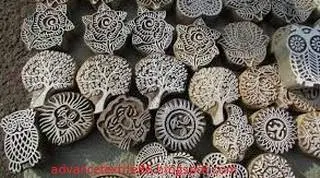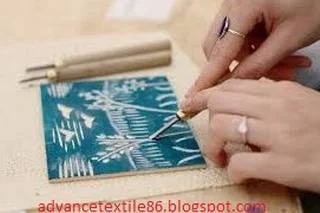Introduction
Block
printing is the simplest, easiest, and slowest of all printing methods. A
design is painted, or transferred to ready wooden blocks. Each individual color
in the design requires a separate block. A block cutter first builds wood
around heavy masses, leaving finer and more delicate work to the end so that
the thicker parts can avoid any risk of damage when it is cut. The printer
applies color to the block and presses the cloth firmly and steadily, hitting
the back smartly with a wooden mallet. Block printing by hand is a slow
process. But it’s an interesting thing to do. It is, of course, capable of
achieving high artistic results, some of which are unnecessary by any other
method. William Morris used this technique in a few of his clothes.
Block printing
Block printing is the oldest
printing process where a design is drawn on a wooden material, linoleum,
rubber, or any other material is called block printing.
Method of block printing
Multiple
blocks are used for color printing, each for one color, although overprinting
two colors can create more color in printing. The paper is usually made in a
frame around wooden blocks.
There
are three printing methods to consider-
Stamping
Used
for many fabrics and mostly for early European woodcuts. These items were
printed on a table with paper or fabric or a flat surface with blocks on top
and printed on the back of the block with a press or hammer.
Rubbing
Currently, the most common printing in the Far East is European nuts and blocks after
the 15th century and is very widely used for textiles. The block is placed on a table above the face, on top of paper or fabric. The back of the paper or
fabric is rubbed with a hard pad, a flat piece of wood, burnish, or a crack of
leather.
Printing in a press
Presses
seem to have been used only in Asia in recent times. Normal weight presses can
be used in Europe but there is a lack of firm evidence. Later, printing presses
were used from about 1480.
Advantages
1.
Block printing is the oldest and simplest process of printing.
2.
It yields very low production
3.
The cost of set up is very less.
4.
Very skilled personnel is required to do such printing
5.
The cost of making a design is very less,
6.
The desired pattern was obtained by repeating the process using different
colors.
7.
Printing is done manually.










0 Comments